Flora in the Savanna
- Barbara Seith

- Jul 14
- 3 min read
The Bushveld, a savanna region of Southern Africa, is characterized by a mix of grassy plains dotted with trees and shrubs, particularly acacia trees and thornbushes. In the winter it is particularly dry, some parts looked like early autumn in New England. The mopani still had leaves but were starting to turn, most other deciduous trees had dropped their leaves.
Datura -- a beautiful but poisonous nightshade, one of the few flowers blooming in winter.
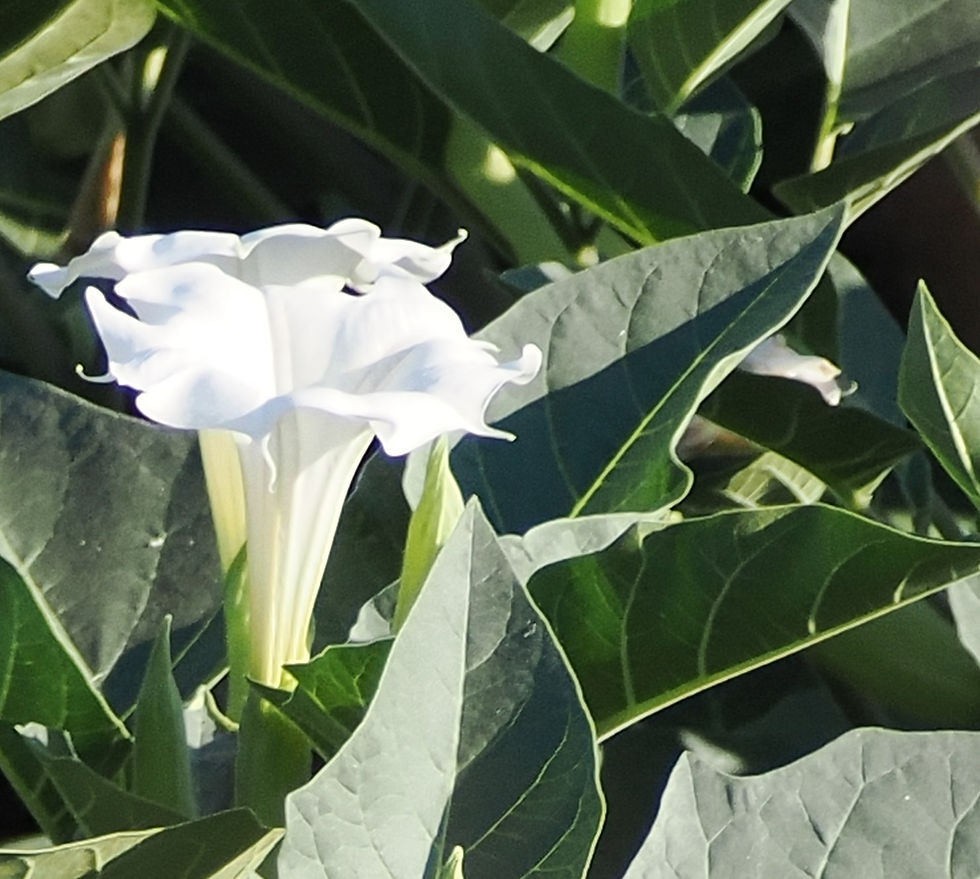

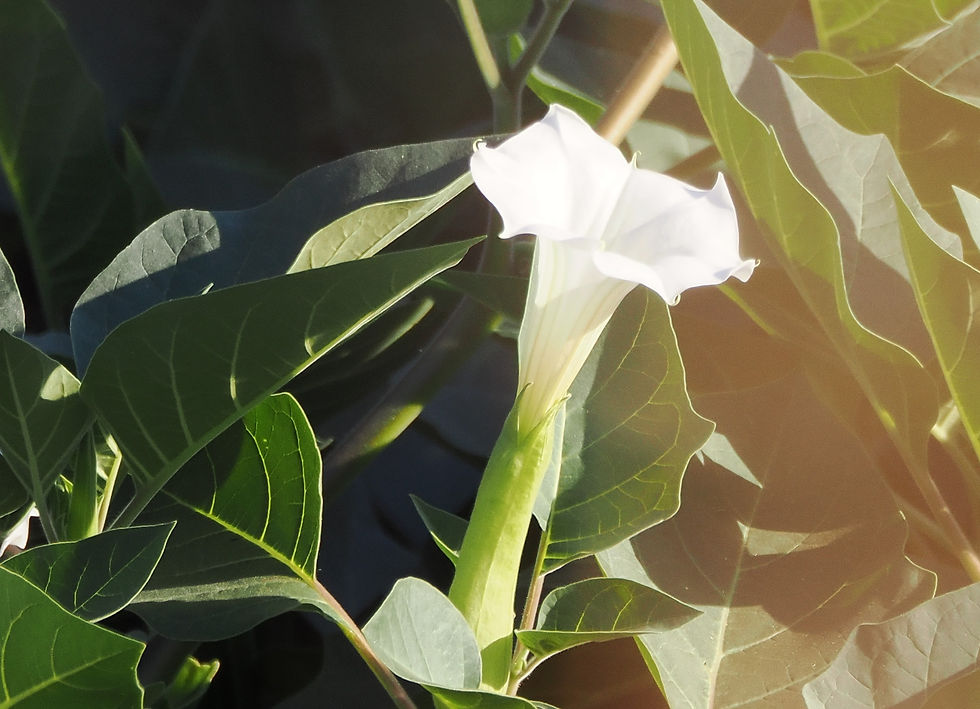
Trees
Acacia - The Acacia is of spiritual significance in that it symbolizes regeneration, perseverance, and integrity. The evergreen nature of this tree denotes the immortality of the human spirit.

Baobab - Baobab trees, also known as the "upside-down tree" or "Tree of Life," are iconic in South Africa, particularly in the Limpopo province, where we spent much of our time. These massive, ancient trees are known for their unique, swollen trunks and long lifespans, with some estimated to be over 2,000 years old. They are a symbol of resilience and are deeply embedded in African culture and folklore.


Fever - Native to Southern Africa and are easily identified by their smooth, yellow-green bark. They are commonly found in swampy areas and near water sources, which historically led to a mistaken association with malaria, hence the name "fever tree". These trees are fast-growing and can reach heights of up to 25 meters.



Strangler Fig - have a unique growth habit where they germinate in the canopy of another tree and send down roots that eventually encircle and potentially kill the host tree. Once their roots reach the ground and establish a strong base, they can grow into independent trees, often replacing the original host.
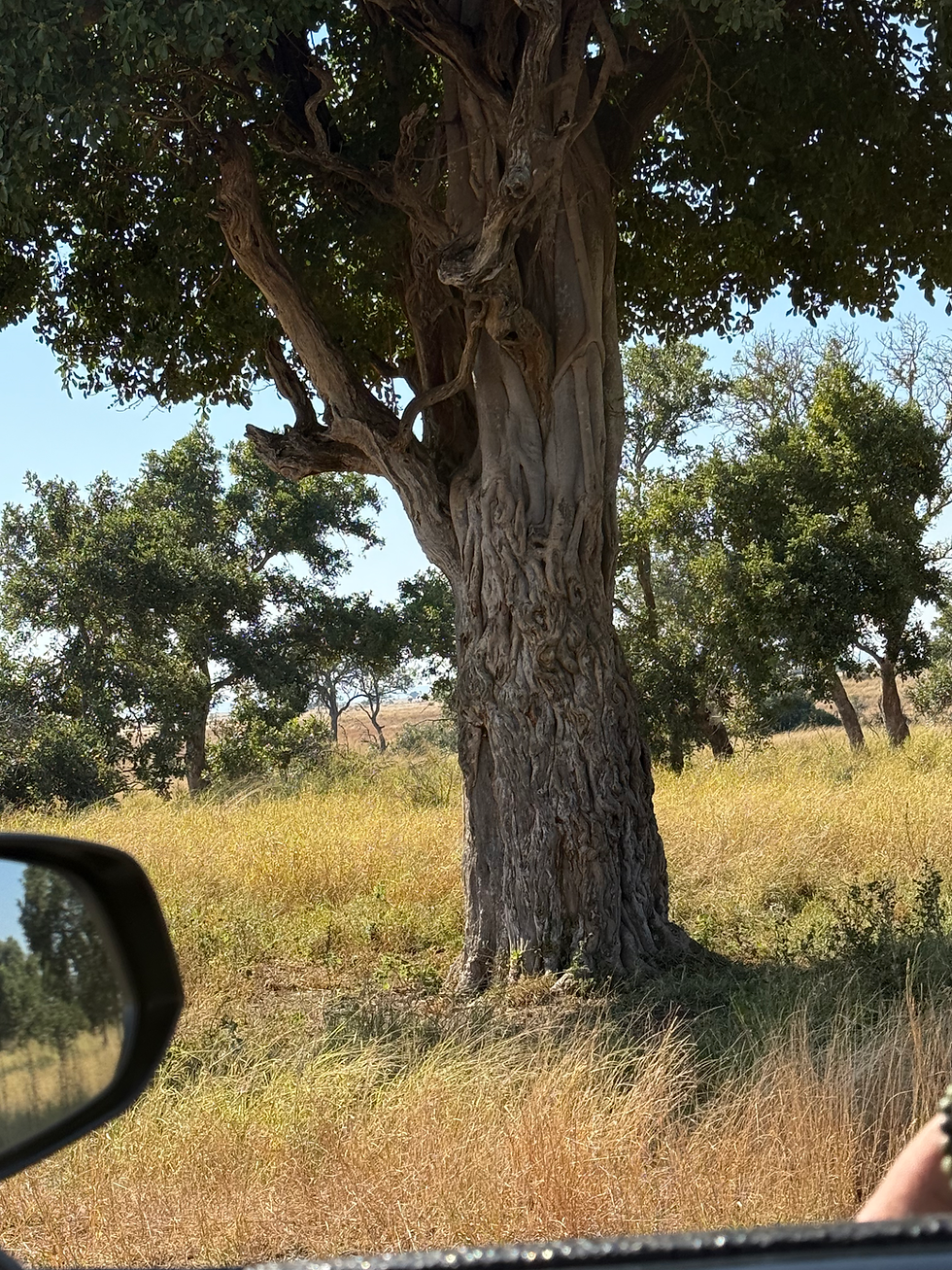
Leadwood - The wood is dense and very hard, difficult to plane, but drills, sands and turns well. It is termite resistant. It was once used for railway sleepers and is now prized for ornamental work and furniture. It burns very slowly with intense heat, and is often used for a fire which is intended to burn all night in order to keep wild animals at bay. It is sometimes used in a barbecue to provide a hot, long-lasting flame.
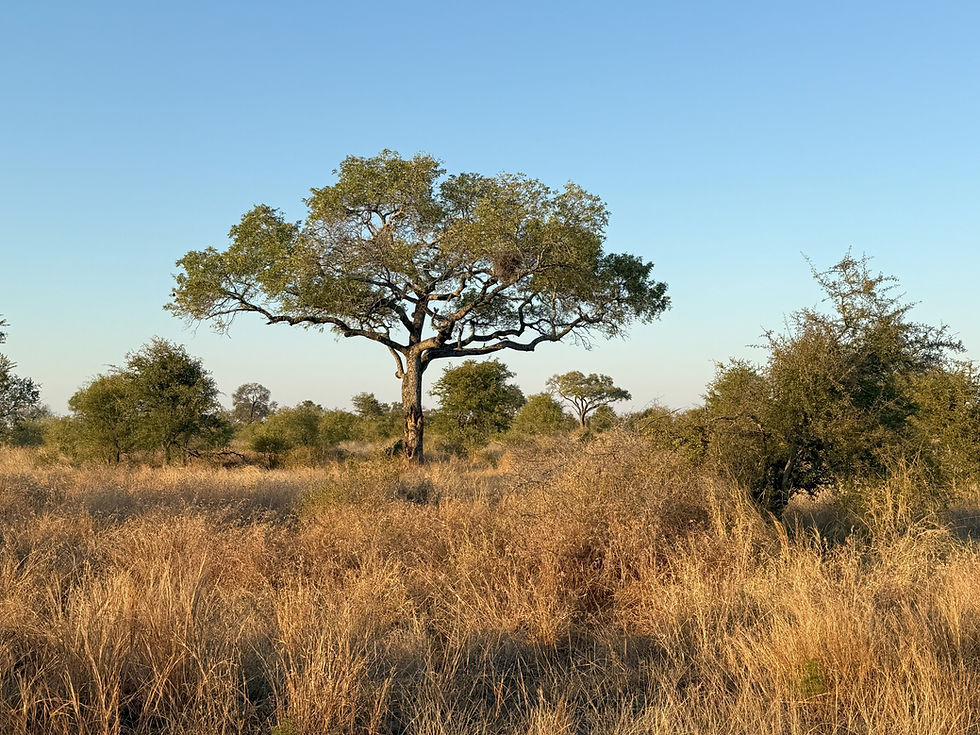
Mopani - Andrew explains...

Sweet Thorn Acacia - This is the most common acacia in South Africa, found in diverse habitats from coastal dunes to grasslands. It is known for its paired, sharp thorns, fragrant yellow flowers, and edible gum that oozes from wounds. Sweet thorn trees are used for various purposes, including traditional medicine, fodder, and even as a coffee substitute. Many animals rely on acacia trees for food and shelter. Birds nest in the trees, insects are attracted to the flowers, and larger animals like giraffes browse on the leaves.

Spike Thorn - These trees are known for their sharp, straight thorns and are found across a wide range of habitats in southern Africa.
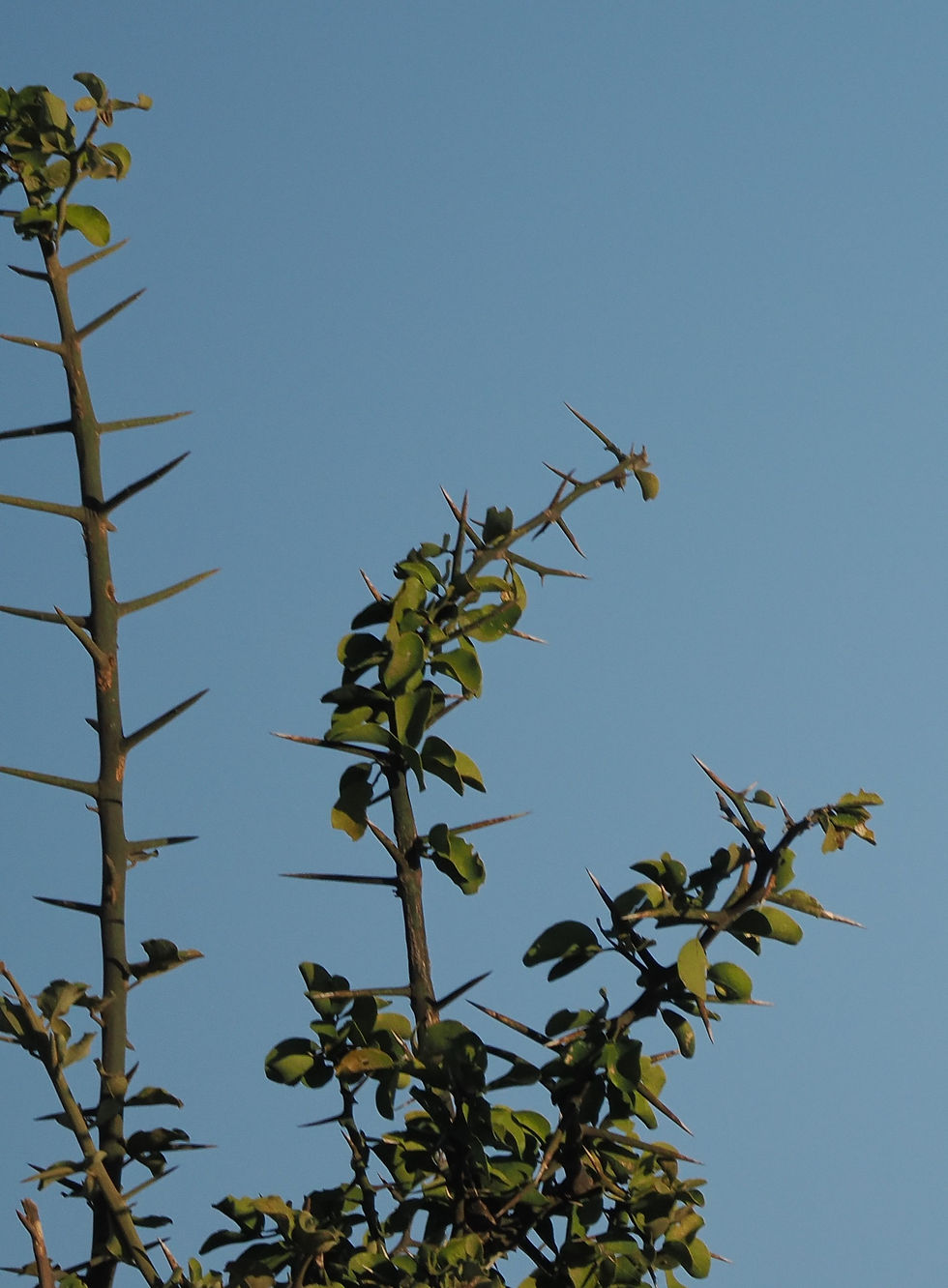
Sycamore Fig - In some African cultures, like the Kikuyu, the sycamore fig, known as "mugumo," is considered a sacred tree. Sacrifices to their supreme creator, Ngai, were traditionally performed under it. The sycamore fig has a unique relationship with a specific type of fig wasp. These tiny wasps pollinate the tree's flowers, which are enclosed within the fruit, ensuring the tree's survival. The tree's figs are a valuable food source for various animals, including monkeys, impala, and warthogs.

Community Spider Webs - intricate, shared structures built and maintained by social spiders. These webs serve as both a hunting ground and a communal home, with multiple spiders working together to capture prey and repair the structure. The webs are often characterized by numerous tunnels and chambers, providing shelter and areas for social interaction.
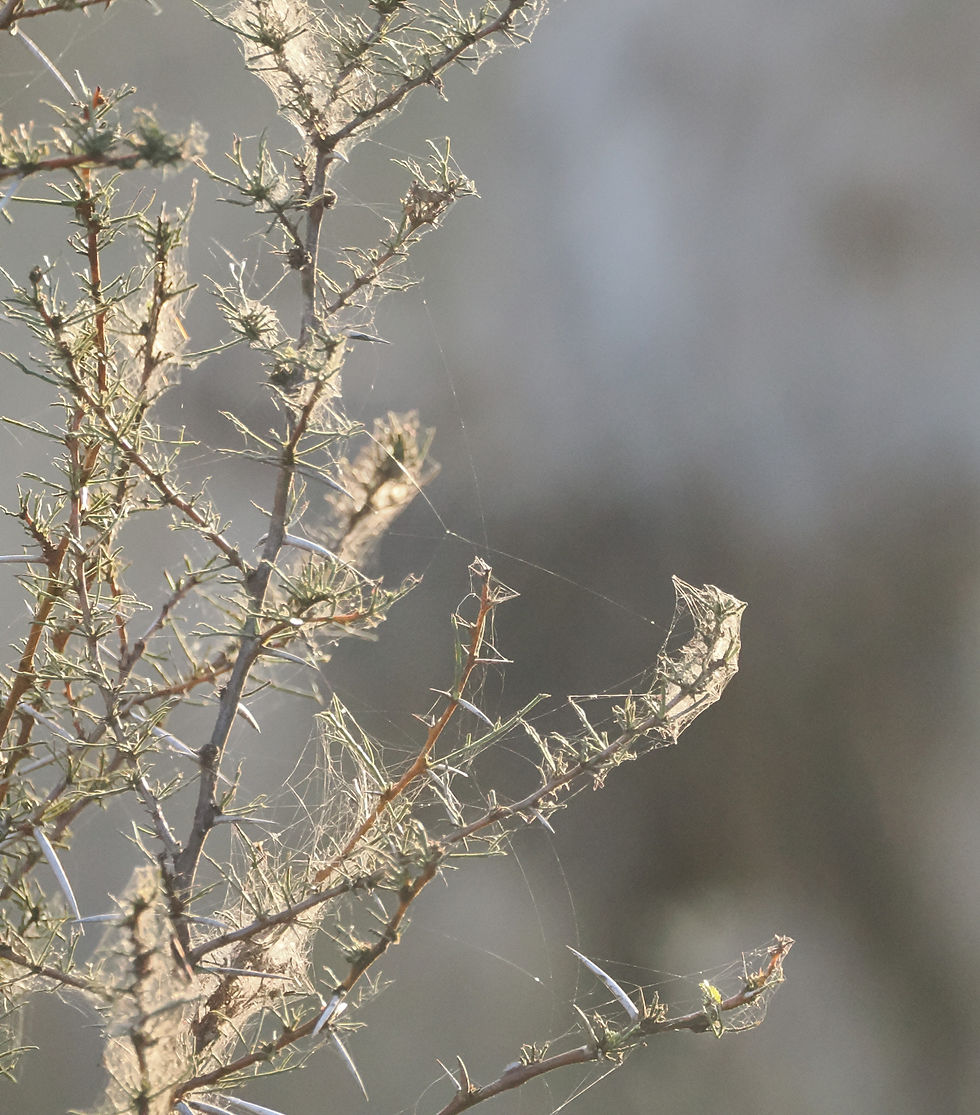
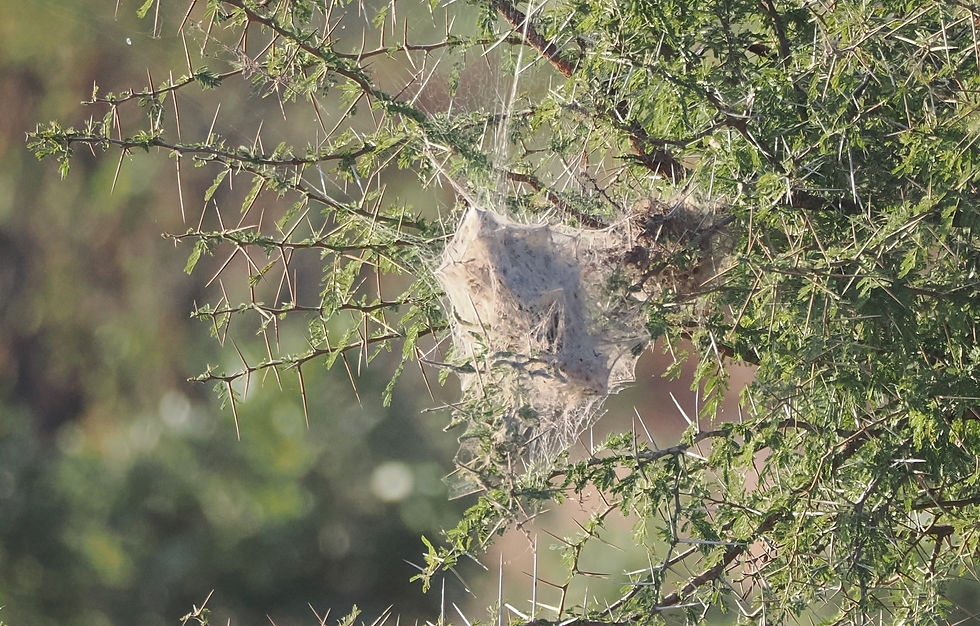



Comments